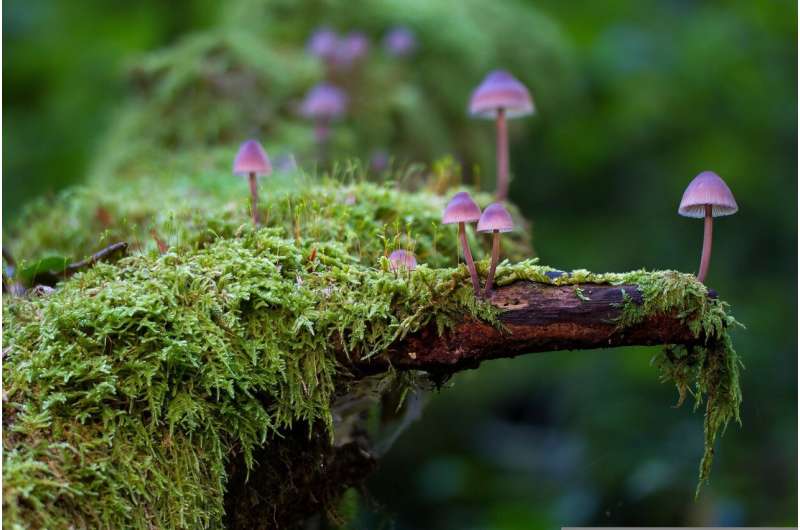Fungi and insect herbivores affect herb diversity depending on species traits of herbs and neighboring tree composition

The mechanisms of biodiversity maintenance have been a hot topic in ecology for decades. Fungi and insect herbivores contribute to the diversity of plants in grasslands, which has been frequently reported. However, evidence about their driving roles on forest herb diversity is not enough.
In a study published in Journal of Ecology, Wang Xugao and Dr. Jia Shihong from the Institute of Applied Ecology (IAE) of the Chinese Academy of Sciences (CAS) have conducted a field manipulation experiment in a temperate forest in northeastern China and examined the effects of fungi and insect herbivores on herb diversity by using fungicides and insecticides.
The researchers found that fungicides decreased herb diversity by 5%, and that the negative effect was weaker in the studied plots where there were a higher number of neighboring tree species. Though insecticides were able to reduce herb diversity as well, it was only in plots dominated by deciduous trees.
In addition, fungicides and insecticides affected herb diversity depending on the defensive traits of herb species (e.g., leaf thickness), and only the herbs with thinner leaves or non-clonal traits significantly decreased their species diversity when the plants were sprayed with fungicides and insecticides.
The study indicates that fungi and herbivorous insects play a non-negligible role in maintaining species diversity of understory herbs in the temperate forest.
More information: Shihong Jia et al, The effects of natural enemies on herb diversity in a temperate forest depend on species traits and neighbouring tree composition, Journal of Ecology (2022). DOI: 10.1111/1365-2745.13973
Journal information: Journal of Ecology
Provided by Chinese Academy of Sciences




















